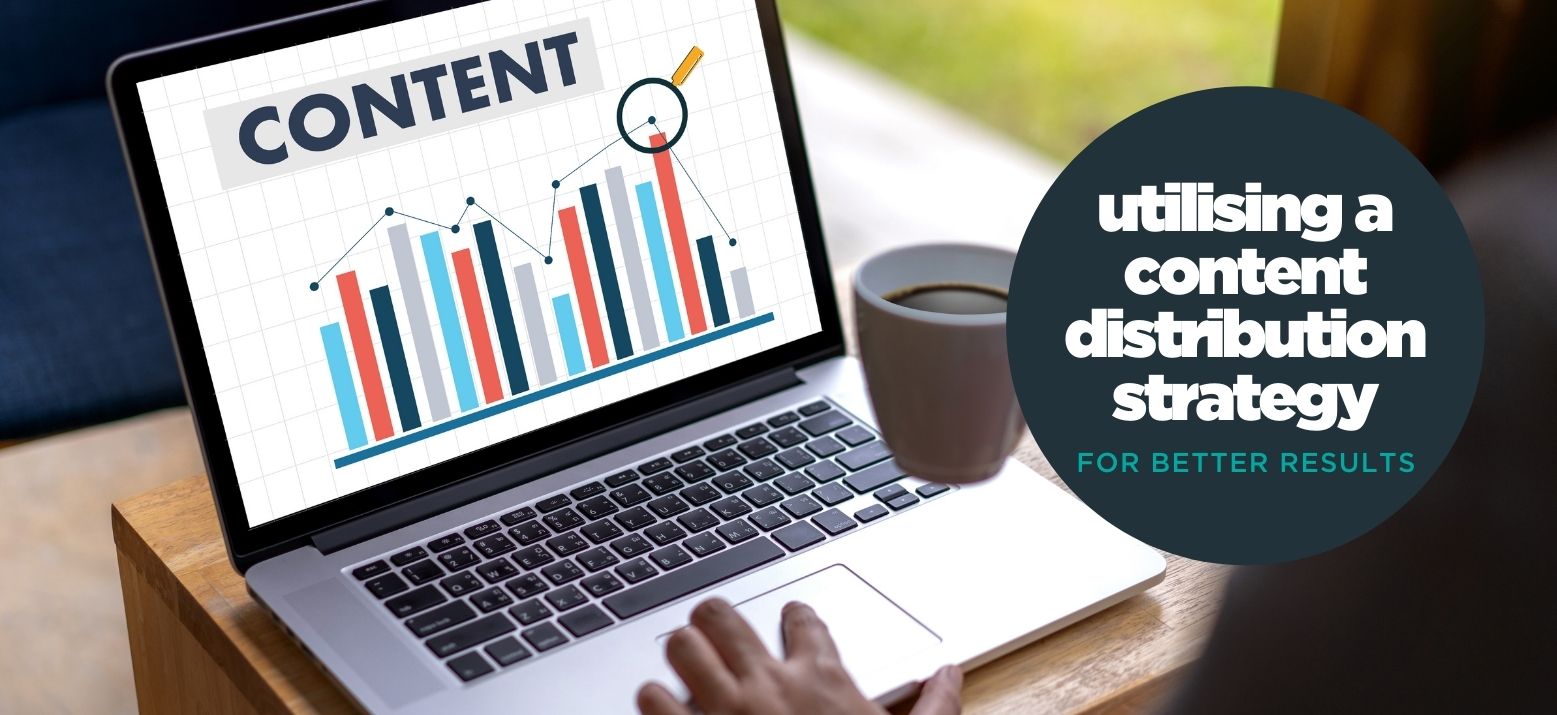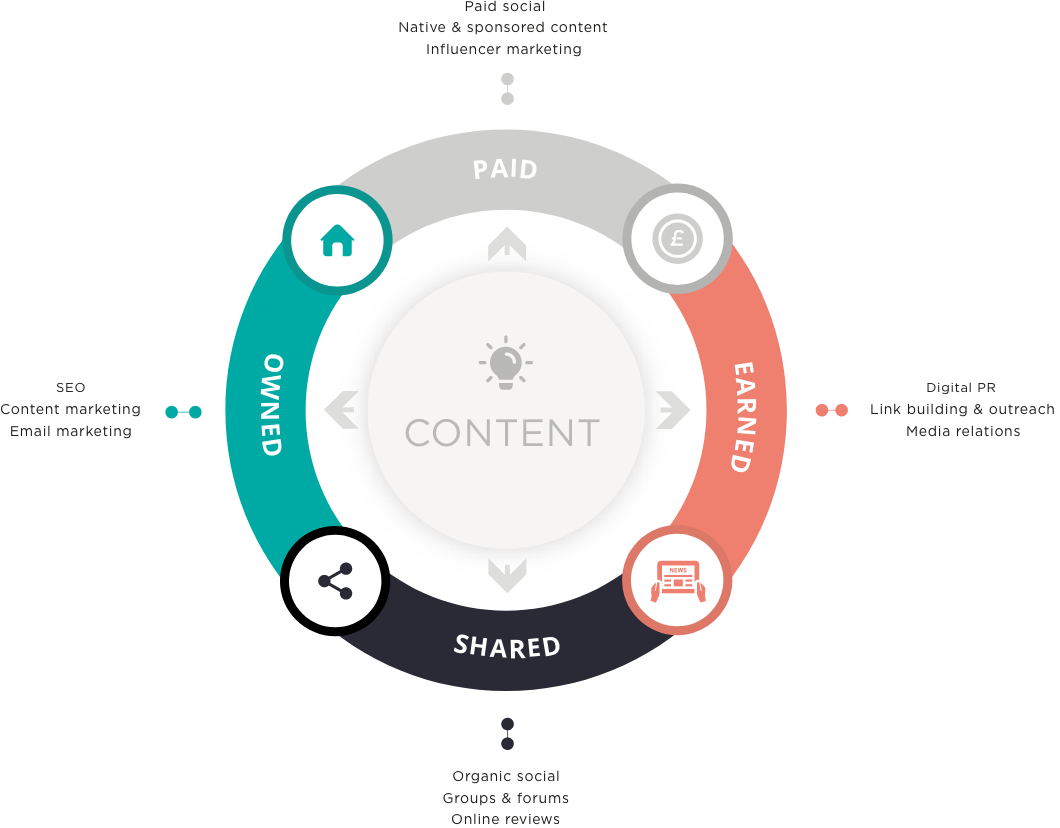Studies show that more than 60% of marketers plan on investing the same or more of their budget into content marketing in 2022. Content ideation and creation can take a lot of time and resource to do well, so are you getting the best possible return from the effort that goes into your content?
In this article, we look at the importance of a content distribution strategy in achieving sustained and long-term results from the content that you’re creating, providing a better ROI and making a tangible difference to your business.
Jump to:
- What is a content distribution strategy?
- A content distribution framework that you ‘own’
- Which distribution channels are right for which types of content?
- Update and republish
- Measure performance to tweak your content distribution strategy in future
What is a content distribution strategy?
In its simplest form, a content distribution strategy refers to the channels and mediums that you plan on using to get your content in front of your target audience.
“If you build it, they will come” is a great idea, and it can have some traction from an SEO and inbound marketing point of view, but you could well be selling your content and brand short if you don’t take things further than this.
A content distribution framework that you ‘own’
At No Brainer, we’re big fans of making the most of your ‘owned media’ because they are the online mediums that you have the most control over. You’re not reliant on a third party and you don’t have to jump through too many hoops (internal processes aside) in order to change or update content that sits on online properties that belong to you.
Owned media can include, but isn’t limited to:
- Your website
- Your blog
- Your newsletters or email marketing materials
- Your social media profiles, including your YouTube channel
- Your podcast platform (if applicable)
By making sure that your content distribution strategy includes all relevant owned media channels (i.e. if your audience are present on this channel, you should be using it in your content distribution framework), as well as taking the opportunity to update, refresh and re-promote your content regularly, you can ensure that your content is working as hard as it possibly can for your marketing benefit.
Which distribution channels are right for which types of content?
The simple answer is that all distribution channels can be right for any type of content, but there may need to be some work done to ensure that the content fits appropriately with the platform.
For example, a guide that you create which solves a problem that your target audience have will obviously be published on your site and you may also push this a little on social media with links back to the original guide or link to it in your monthly email newsletters, but a small amount of additional effort can make this single guide reach much further.
If the guide offers something that you can’t get anywhere else, such as thought leadership from an individual within your brand or interesting internal data, it could potentially be repurposed as a webinar, which then is later published on YouTube, and can also be made into an interview podcast on the same subject.
The main points or takeaways can be made into graphics that work brilliantly to engage people on social media and also generate links as people credit the source of the graphic they share or use themselves. You could also offer exclusive insight or data to your newsletter subscribers on the same subject that is over and above what is available publicly.
Update and republish
Content that is good to start with can become great over time if it’s updated and added to with useful insights that meet a need in your audience. If you do some research or a survey that produces interesting results for a piece of content that people seem to find useful, why not make it an annual event?
If some new data becomes available that changes things for your original piece, why not update it to reflect this?
It’s a common struggle for content marketers – when to move on to the next piece, but it doesn’t have to be either/or. You can revisit content months or even years later to give it a refresh and ensure it’s working as hard as it can in the longer term.
Measure performance to tweak your content distribution strategy in future
Not every piece of content will hit the mark on every channel the first time; that’s just a fact of life. However, if you can measure performance and identify why something hasn’t reached its full potential, you can make sure that you feed this into your future content distribution strategy.
Knowing which metrics and KPIs are most pertinent for your needs is something that needs to be tailored to your individual strategy, but some common examples could include:
Website content:
- Traffic
- Rankings
- Traffic sources
- Engagement time on the page
- Links gained to the specific page
- Conversion rate on that page
Blogs – all of the above, plus:
- Social shares
- Exit rate of the page
- Any comments that aren’t spam
Email marketing
- Open rate
- Click-through-rate
- Click-to-open-rate
- Conversions from email source traffic
- Unsubscriptions
Social etc.
- Shares
- Positive engagement e.g. likes, upvotes, positive comments
- Negative engagement e.g. ‘angry’ emojis or negative comments
- Clicks to the website from each platform
- Community/follower growth
- Views/full views for video content
It’s important to review content performance with a critical eye. It can sometimes feel like a piece of content that you’ve put sweat and tears into is your ‘baby’ and any negative feedback can be hard to take. However, when things don’t go as you expect it can provide meaningful learning and insight into how you can hit the mark next time instead, or how you can adapt the piece you originally created and go again.
If you would like help with your content distribution strategy or want to chat about how we can assist with any element of content marketing, our team would love to hear from you. Please use the form below to get in touch.








